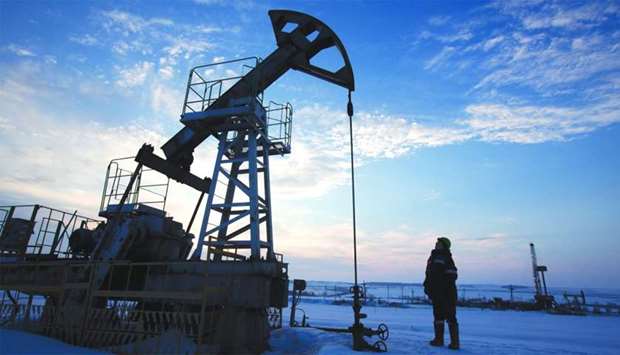* US oil rig count drops to lowest levels since June
* Iraq supplies cut amid fighting between govt. forces, Kurds
* India imports hit a new record in September
* Crude volatility index (OVX) at 2014 levels
Oil prices were stable on Monday, supported by supply concerns in the Middle East and declining US drilling activity, although analysts warned that the United States market may not be tightening by as much as expected.
Brent crude futures were at $57.75 at 0710 GMT, unchanged from their last close.
US West Texas Intermediate (WTI) crude was at $51.92 per barrel, up 8 cents, or 0.14 percent.
‘Oil prices are holding comfortably above $50 as possible supply disruptions in the Kurdish region of Iraq support prices,’ said William O'Loughlin, analyst at Rivkin Securities.
‘US production was also recently impacted by a hurricane for the second time in as many months and the number of US drilling rigs declined for the third week in a row,’ O'Loughlin said.
The amount of US oil rigs drilling for new production fell by seven to 736 in the week to Oct. 20, the lowest level since June, energy services firm Baker Hughes said on Friday.
Some analysts warned, however, that the US market may not be tightening by as much as expected.
‘The decline in drilling should only be temporary as oil prices have risen significantly since June. And the fall in actual production was also temporary due to hurricanes,’ said Carsten Fritsch of Germany's Commerzbank.
Outside the United States, flows from Iraq were reduced due to fighting between government forces and Kurdish groups while production is being withheld as part of a pact between the Organization of the Petroleum Exporting Countries (OPEC) and non-OPEC producers to tighten the market. Going forward, traders said much will depend on demand.
China's oil demand remains voracious, hitting a January to September average of 8.5 million barrels per day (bpd).
‘Three main factors are driving China's insatiable appetite for crude: declining domestic production, increased access to imports and exports for independent refiners, and building up the strategic petroleum reserve,’ Britain's Barclays bank said.
In India, September oil imports hit a record 4.83 million barrels per day (bpd), up 4.2 percent from this time last year and about 19 percent more than in August, ship-tracking data from industry sources and Thomson Reuters Analytics showed.
Given the tightening oil market conditions, many analysts expect prices to rise further.
‘We will see oil prices higher by 10 percent by the end of the year. We have started to accumulate strong positions within the oil sector,’ said Shane Chanel, equities and derivatives adviser at ASR Wealth Advisers.
Despite the tightening market and recent price rises, market volatility has been low.
The crude oil volatility index, which measures market expectations for 30-day price volatility, fell to levels similar of 2014 last Friday.



